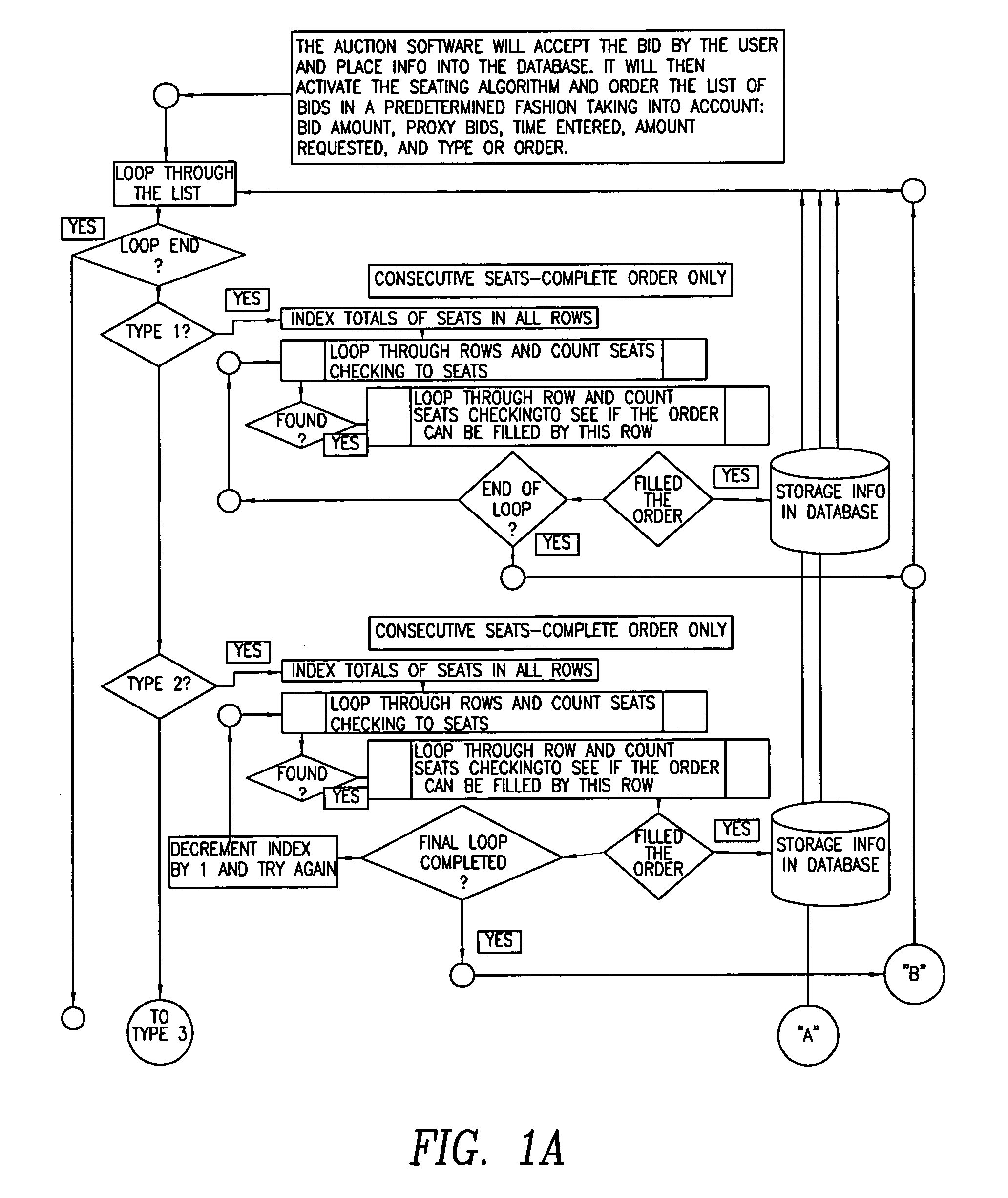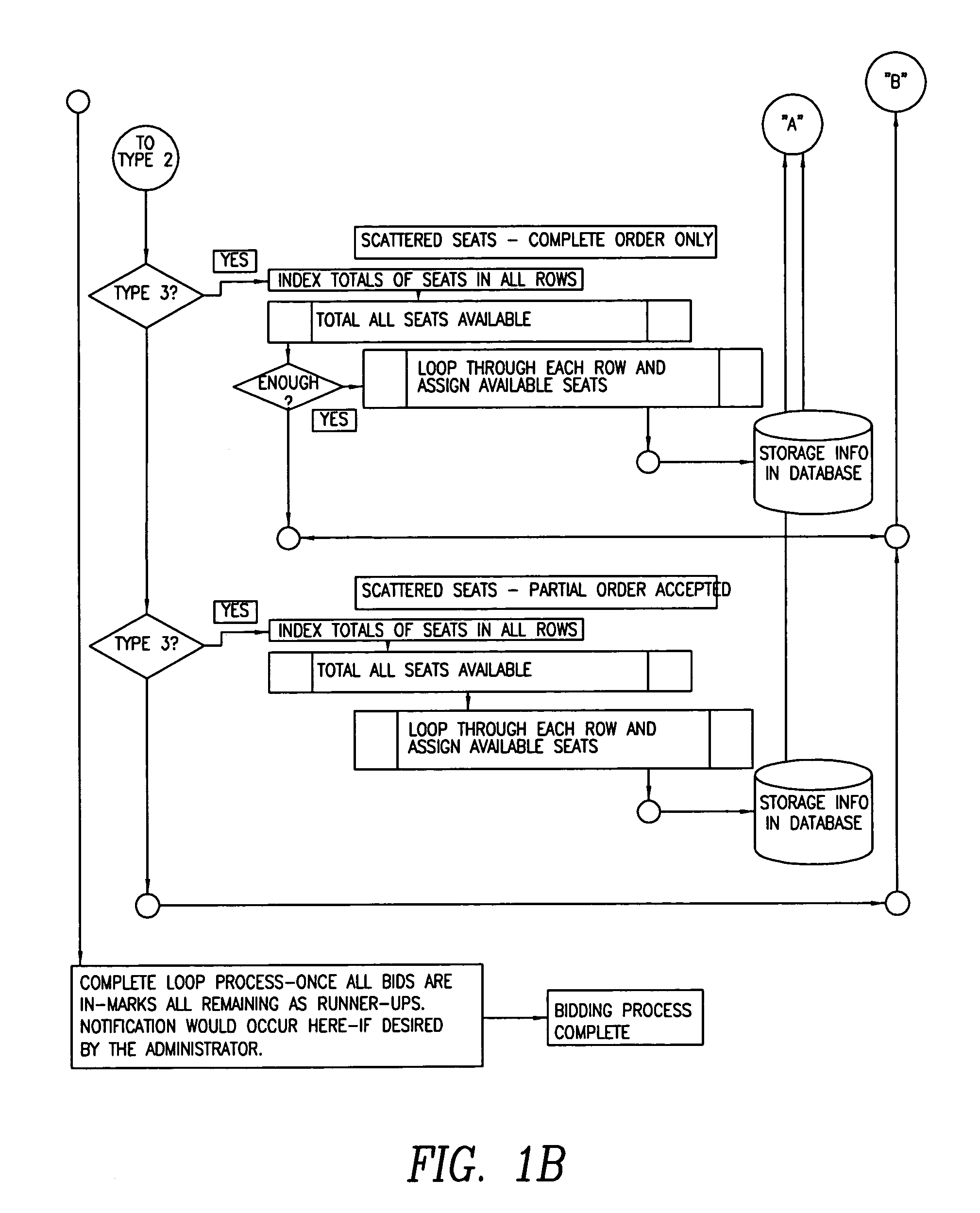Ticket auction
a technology of tickets and auctions, applied in the field of online auctions, can solve the problems of affecting the quality of tickets sold, failure to optimize the pricing, and often selling out tickets for a given performance, and achieve the effect of eliminating chaos
- Summary
- Abstract
- Description
- Claims
- Application Information
AI Technical Summary
Benefits of technology
Problems solved by technology
Method used
Image
Examples
Embodiment Construction
[0023]According to the method of this invention, producers of entertainment events transmit the following information to the central computer (101) that implements the method:[0024]1. A seating chart (102) of a theater or stadium (“auditorium”);[0025]2. Seats to be auctioned;[0026]3. Available performance dates (100);[0027]4. Current price schedules (108) for different sections (110) of the auditorium; and[0028]5. Deadline (112) for accepting offers.
[0029]The ticket seller of the auction may break the available seats for the same event into multiple auctions, and thereby further minimizing scalping.
[0030]Templates (114) for the auditorium are obtained before an auction and stored on the central computer (100). The best sources I know for these templates (114) are the following books: Sandy Millman, SEATS (for New York area), and Denise Cady, GOOD SEATS (for Los Angeles and Chicago). The template (114) is displayed to the general public on the auction's Web site (116).
[0031]When a po...
PUM
 Login to View More
Login to View More Abstract
Description
Claims
Application Information
 Login to View More
Login to View More - R&D
- Intellectual Property
- Life Sciences
- Materials
- Tech Scout
- Unparalleled Data Quality
- Higher Quality Content
- 60% Fewer Hallucinations
Browse by: Latest US Patents, China's latest patents, Technical Efficacy Thesaurus, Application Domain, Technology Topic, Popular Technical Reports.
© 2025 PatSnap. All rights reserved.Legal|Privacy policy|Modern Slavery Act Transparency Statement|Sitemap|About US| Contact US: help@patsnap.com



